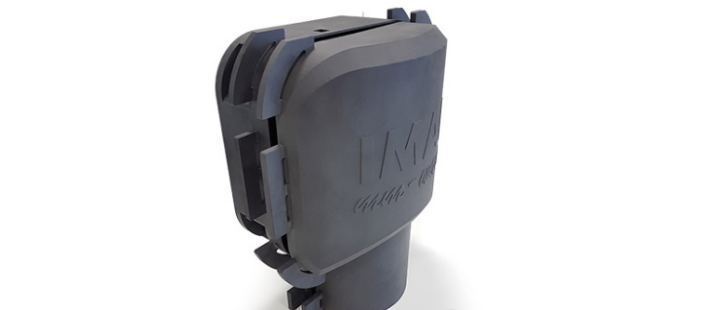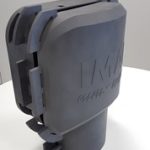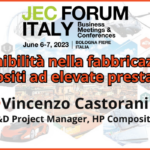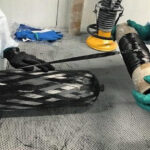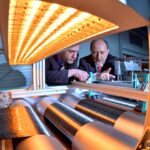Since 1970 IMAL is word-wide leading company in machinery for the production of wood particle, plywood, MDF, OSB.
For an important customer, IMAL has created a quality control system to be placed at the end of the production cycle, based on TeraHertz / millimeter wave (T-ray) technology.
IMAL turned to CRP Technology for the manufacturing of the functional sensor housing box.
The application had to be created in a short time, and to combine high mechanical characteristics (resistance to acceleration, stress and heat) whilst maintaining high level aesthetic standards.
The activity of CRP Technology’s 3D Printing department has been focused from the beginning on maximizing and achieving the aims required by IMAL.
Work began with an accurate analysis of the 3D and 2D files.
Through the know-how earned in over 25 years of activity serving the most demanding and performing industrial sectors. CRP Technology has been able to assist IMAL in choosing the best technology and material to guarantee the success of the project: Selective Laser Sintering process and Carbon-composite Windform® XT 2.0 material, from the Windform® TOP-LINE family of composite materials for LS technology (invented by CRP Technology itself.)
Windform® XT 2.0 is a groundbreaking carbon fiber reinforced composite 3D printing material known for its outstanding mechanical properties. It is particularly suitable in demanding applications such as motorsports, aerospace, and UAV sectors.
Windform® XT 2.0 replaces the previous formula of Windform® XT in the Windform® TOP-LINE family of composite materials. It features improvements in mechanical properties including +8% increase in tensile strength, +22% in tensile modulus, and a +46% increase in elongation at break.
The choice of the material proved to be particularly appropriate:
the sensor housing box turned out to be electromagnetically shielded thanks to the Carbon filled Windform® XT 2.0 composite material. An added unexpected bonus considered very important by IMAL.
For the first time IMAL didn’t use mass-produced sensor housing boxes, as they would not have met the quality criteria of the company.
“We turned to CRP Technology – IMAL commented – as we knew they would support us during the entire creation process, advising us on the best choice to get the product we wanted, and to manufacture it in the shortest time: the sensor housing box had to be in motion, and with the right mechanical characteristics to be fully functional.
In addition – IMAL added – the box had to be aesthetically pleasing since the quality control systems are not only the flagship of our company, but also the top of sensor technology.
This is our first experience with professional 3D printing, and we are very satisfied. Working with CRP Technology we had collaboration, high quality, competence and an open and constructive approach towards us. ”
Once received the .STP file from IMAL, CRP Technology created the functional 3D printed sensor housing box in two shells.
A laser scan was performed on the finished part, from which a control report was drawn up to be provided to IMAL.
To obtain higher feature tolerances, the sensor housing box has been CNC-machined on a 5-axis machining center on specialized jigging.
This was possible through the characteristics of Windform® composite materials: not only Windform® XT 2.0, but all the materials in the Windform® TOP-LINE range of composite material can be CNC-machined.
CRP Meccanica, a leader in high-precision CNC machining for over 50 years, processed the sensor housing box via Subtractive technology
The finished part was checked by CRP Meccanica’s Quality department and delivered to IMAL.
CRITICAL ISSUES
The component would have been subjected to continuous stress and vibrations, so it was necessary to proceed with a manufacturing technology and material that would give the sensor housing box characteristics of resistance to acceleration and high loads.
Professional 3D printing (Selective Laser Sintering), combined with Windform® XT 2.0 composite material and high precision CNC machining, proved to be the best choice: the application has successfully passed the control and testing criteria, and has fully complied with the requests and IMAL’s standards.
“This is our first experience with professional 3D printing, and we are very satisfied. Working with CRP Technology we had collaboration, high quality, competence and an open and constructive approach towards us. ” – IMAL
CRP Technology Srl: www.crptechnology.com
Windform: www.windform.com


